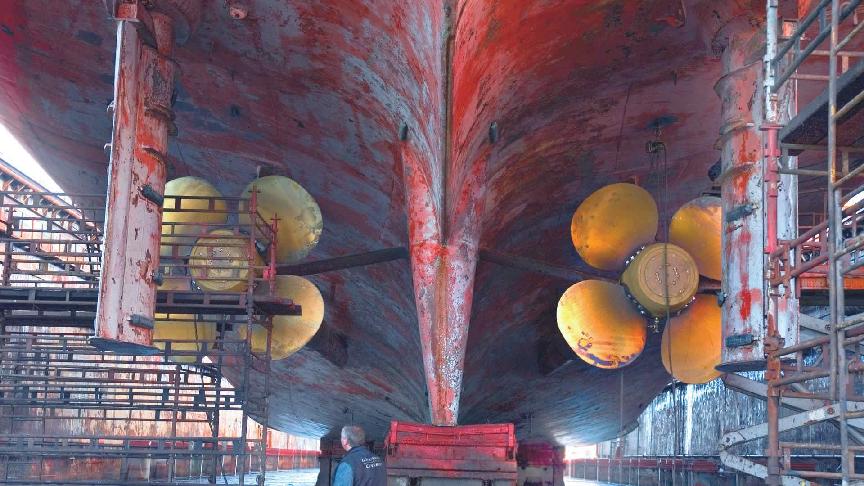15 February 2023 (Lloyd's List) - CMA CGM has added the first windshield to the bow of one its ultra-large containerships in an effort to improve fuel consumption and thus reduce emissions.
According to Alphaliner, the 16,000 teu capacity, 2012-built, CMA CGM Marco Polo had the fuel-saving structure retrofitted during its second special survey at the Yiu Lian Dockyard in Shekou, China, from mid-November to mid-December.
The addition of aerodynamic windshields to large boxships was pioneered by Ocean Network Express partner Mitsui OSK, which trialled the device on the 6,724 teu capacity MOL Marvel during 2015, to demonstrate the potential for reducing wind resistance and consequently fuel consumption and CO2 emissions.

According to Mitsui OSK, the device was able to reduce bunker consumption by as much as 4% under ideal conditions though real-world gains are typically between 2% and 3%.
With a typical very large containership consuming up to 200 tonnes of very low sulphur fuel oil per day, the cost savings gained from the fitment of a windshield could be in excess of $200,000 on a 90-day Asia-Europe round voyage, at current bunker prices. Following the successful trials with the MOL Marvel, Mitsui OSK has since retrofitted two megamax boxships with windshields.
The 20,170 teu capacity One Trust and One Tradition were each fitted with the fuel-saving device last year in China during their five-year dry dockings. Both vessels are operated on Ocean Network Express's Asia-Europe services.
The CMA CGM Marco Polo is currently on its first voyage, from Asia to the US east and west coasts via Suez, since the fitting of its windshield. Modern large containerships load around 60% of their containers above deck which creates a large amount of wind resistance.
All windshields constructed so far are of a horseshoe-shaped design, which encloses the first bay of deck-stacked containers to maximise the effect of reducing wind resistance.
This design is optimal in reducing the weight of the additional steel work required in the construction of the windshield. Windshields also protect ships from taking on green water in bad weather, and thus protect containers from damage in the forward deck section of the ship.
Whether CMA CGM or other operators have plans to fit further ships with windshields is not presently clear.







